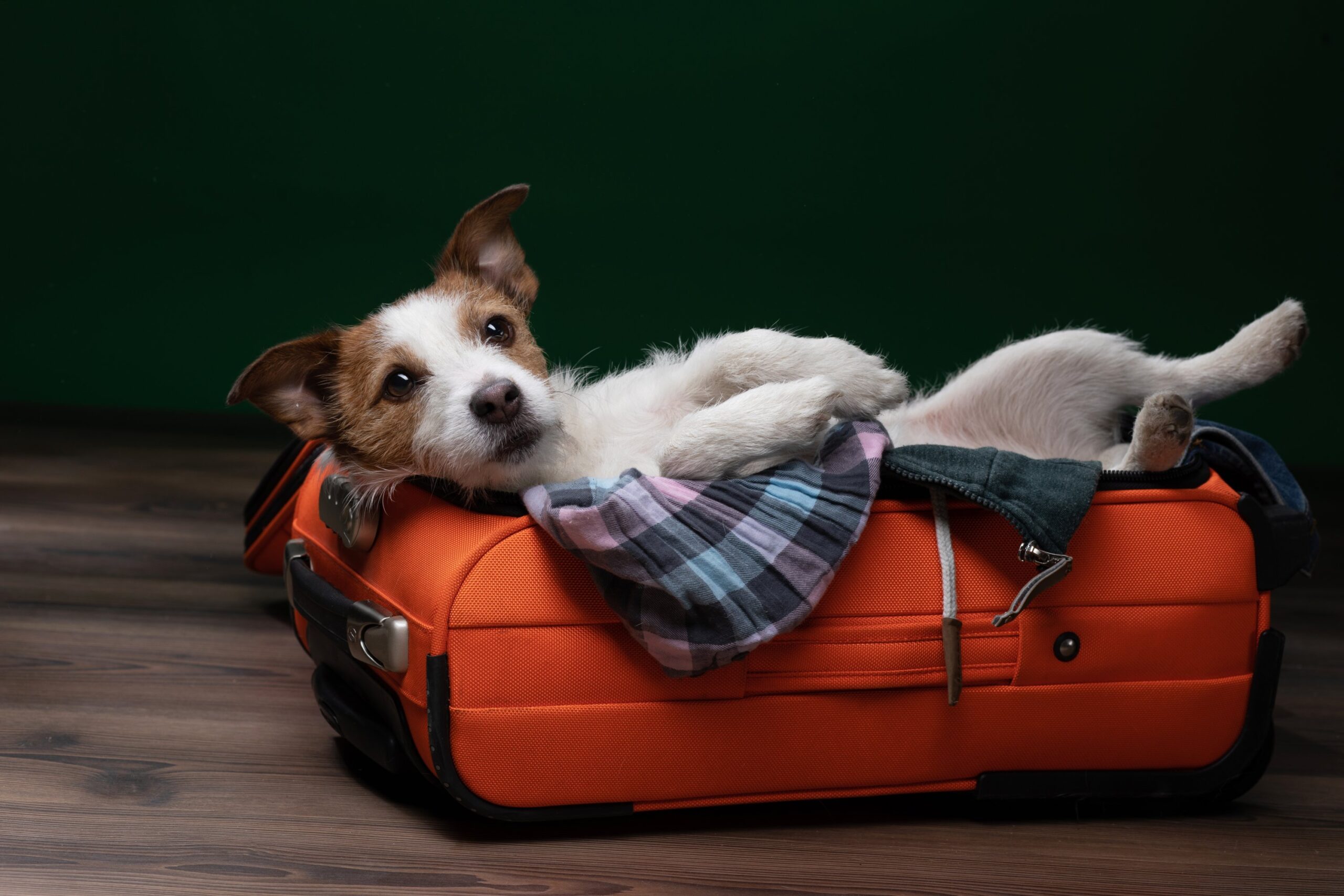It happens often, we go back home to visit family or just want to go on a vacation across the country, but we don’t want to leave our pets at home. Traveling with our pets can be fun and lead to enjoyment for both parties, but it needs to be done right. When traveling the first thing that needs to be done is to make sure your pet is up to date with vaccines and you have those records to take with you. This is important when traveling across state lines or out of the country, there are different laws pertaining to pet ownership in each area. Records also come in handy in case of an emergency, it can save you money on paying for certain tests when visiting a different veterinary office, and if somethings has gone wrong it will allow the other clinic to know your pet has been vaccinated as well as previous histories, injuries, or illnesses. Your pet should also have tags for identification and/or a microchip so if lost the pet can be returned back to you safely. When booking a hotel, staying with friends, or staying with family make sure you inform them you have a pet and make sure your pet is welcome. Check with flight companies as well to make sure your furry companion is allowed in cabin. It can be dangerous for your pet to ride with cargo since you cannot tend to them or regulate temperatures. Most airlines allow cats, small dogs, and birds on flights in the cabin and paid ticket to board your pet. If your only option is boarding with cargo, give us a call to discuss the safest way to fly your pet.
Now that we’ve discussed the legalities, we need to talk about pet health when traveling. When traveling by vehicle make sure your pet is in a carrier. Allowing pets to roam loose in your vehicle is frowned upon because it is very dangerous and lead to distractions. Imagine your pet jumps out of the window or blocks your view of the road while driving, personally this sounds very scary! This is especially dangerous you were involved in a collision. Just like us, your pet needs to have some sort of seatbelt. A hard carrier is best when traveling by vehicle to prevent life threatening injuries in the case of an emergency. For our larger friends, there are a number of crash tested harnesses that will act as a seatbelt. The temperature in the car must also be monitored. When leaving a pet unattended in the car make sure to keep the AC or heat running to prevent heat stroke, hypothermia, and possible death. Remember to take feeding and bathroom breaks during long trips! When on a flight your pet may become stressed from the amount of people, the amount of movement, being confined for a long period of time, and so much more. If you’re nervous call and have a discussion with Dr.Pajl about the best way to handle these situations. Sometimes pets need medications to calm them down while on flights to prevent stress and disturbance of other fliers.
Read more here at the AVMA’s website: https://www.avma.org/resources-tools/pet-owners/petcare/selecting-pet-your-family

